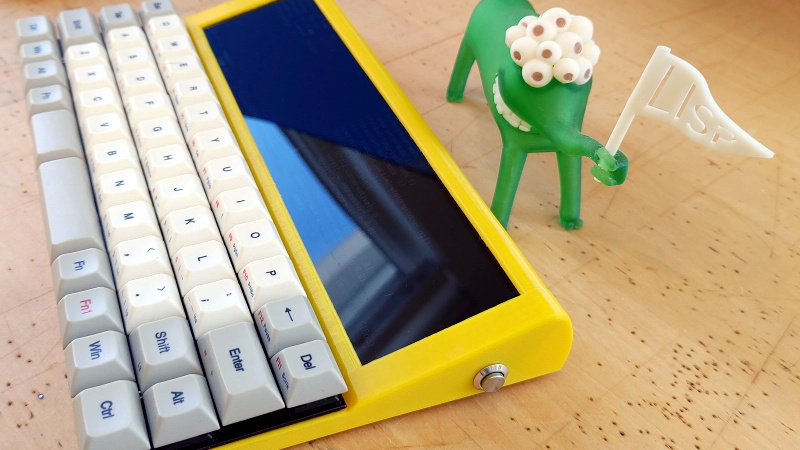While on the surface they might seem like little more than cosplay accessories, there are perfectly valid and practical reasons for building a custom cyberdeck. For one thing, a hand-built deck is going to be easier to upgrade and modify down the line. A bespoke rig can also be made to fit your exacting specifications, with each and every design choice made specifically to support your personal style and workflow.
For [Conrad Barski], that meant a computer that would stay out of his way and allow him to take notes and write code while keeping distractions to the absolute minimum. All he wanted in his dream machine was a nice mechanical keyboard, a widescreen display, and enough battery power to go mobile should the need arise. Anything else would be gilding the lily. For those who want to distill personal computing down to its simplest form, this build is really the high water mark.
[Conrad] is currently in the early stages of turning his Lisperati1000 into a kit others can build for themselves, so details are a bit sparse at the moment. But we do know there’s a Raspberry Pi Zero W, a Vortex Core 40% keyboard, and 4,400 mAh worth of battery power wrapped up in that slick 3D printed enclosure. Readers may recognize the 1920×480 ultra-wide LCD from the modernized TRS-80 Model 100 we covered recently, or perhaps the gorgeously reimagined retro terminals of [Oriol Ferrer Mesià]. If you’ve got retro-futurism on the brain, this seems to be the display to beat.
Whether you want to explore vintage computing, stylishly take control of your custom race car, or cruise the airwaves with an integrated software defined radio, a completely custom portable computing device can make for an interesting alternative to another ho-hum laptop from the Big Box electronics store.
















Based on a Vortex Core keyboard – an elegant design, but unlikely to be cheap.
https://candykeys.com/product/vortex-core-rgb
I fairly sure that cheap was not the goal.
Search Ali Express for: 8.8 inch 1920×480
to find the screen.
Who said anything about it being cheap? If you’re taking the time to design and build a custom computer, I’d hope you would spring for quality parts.
the keeb alone is $89 by itself. found the screen on ebay for $#65 so the bom is probably up there. but i really like the design. simple and to the point.
The 8.8″ screen is great, but I’d like to see a 10″ of the same height, so it stretches across a full-sized keyboard.
Also I think these screens can be directly attached to raspberry pi by the MIPI/DSI interface, though it’s missing in the zero. Anyone tried that?
This!!! This is what I wanted since I bought my Z88!!!
Looks like a winner.
Tom, you’ve kind of buried the lead here. Its purpose is NOT to be a note-taker. As you could possibly guess from it’s name, Lisperati1000 is meant to run EMACS, and therefore be a standalone Lisp computing machine. Take THAT, 1980s BASIC fanboys!
Looks nice, unless you want to actually type Lisp code with it. Then it looks like a torture device.
Please elaborate.
It’s all brackets and semicolons, and looks like you need to do 3-key combos to get them.
Fair point, but if you’re using EMACS, you’re already up to your waist in key bindings; what’s a few more? :)
F an emac.
vim gang rise up
Is that true? Are the Fn keys locking? I thought they worked like shift keys. But if they lock, yes, it would be a problem.
(?)